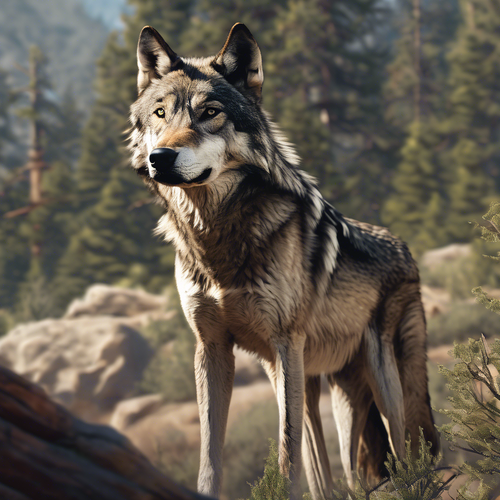California’s Wild Wolf Population: Howling Back to Life
Once the stuff of whispered legends and library dust, California’s wild wolf population is making a captivating comeback, howling back with a tenacity rarely found in modern wildlife narratives. As these majestic predators begin to reclaim their territory, they evoke not only awe but also a measure of irony. After decades of near eradication, could it be that mankind’s careless stewardship has inadvertently nurtured a cycle of regeneration? 🌲🐺
In the mid-20th century, the gray wolf was effectively removed from California’s landscape, a casualty of ranching interests and a culture steeped in fear. Fast forward to today, and numerous conservation efforts have propelled these wolves back to the point where their population can once again stir the soil of the Sierra Nevada. Yet, therein lies the antithesis: while societies dream of harmonious coexistence with nature, they often struggle to overlook their skepticism towards the very embodiment of wilderness.
The Resurgence: A Wolf with a Tooth and Claw
In 2023, the California Department of Fish and Wildlife reported approximately 16 known wolves roaming across the northern coastal range of the state, a sharp rise from the mere two that were documented just a few years prior. A success story for conservationists, indeed! But as the wolves stretch their legs across the land, they provoke questions about what it means to share that space with humanity.
Consider the paradox: these apex predators, revered in folklore, are often vilified in practice. Before their return, locals in rural Montana may have likened wolves to shadows creeping into their lives, threatening livestock and disruptively asserting their primal rights. Yet, like pieces of a complex puzzle, wolves play a critical role in the health of their ecosystems. With their resurgence follows a restoration of balance—control of deer populations and a flourishing of biodiversity that hums with life like a well-tuned orchestra. 🎶
Challenges Along the Way: A Delicate Balance
But this restoration is not without its trials. Farmers have understandably raised concerns as they witness the return of wildlife that they believe could threaten their livestock—the very fabric of their livelihoods. Hence comes the biting irony: the symbol of wilderness recovery bears the burden of criticism from those tasked with safeguarding their own domain. With wolves making their presence known, conflicts between nature and agriculture surface like dark clouds on a sunny day.
Predation rates can cause tension, so what’s next? Enter the concept of coexistence: innovative strategies like compensation programs for livestock losses and non-lethal deterrents are being explored with cautious optimism. As discussions unfold in town halls and backyards alike, one can’t help but wonder—can we find a way to coexist that doesn’t seek to extinguish a return to the unruly natural order? 🌿
“The wolf is a keystone species. Its actions dramatically shape ecosystems, and in California, they are not just returning wolves—they are the embodiment of balance,” claims Dr. Maria Lopez, a wildlife ecologist at UC Davis.
Connecting Past and Present: Learning from History
History serves as a guide, illuminating how cultures have grappled with the presence of wolves across millennia. Just as indigenous communities revered these creatures, understanding their essential role can inspire modern conservation efforts. As if echoing through time, the wisdom of past generations can guide humanity as we learn to harmonize our ambitions with the unyielding forces of nature. 📜
The heart of conservation isn’t merely about protection; it’s about embracing complexity. Balancing ecological needs against human interests is akin to walking a tightrope—one misstep, and the balance is lost. Yet, history shows that restoring a wolf population injects vitality into ecosystems, creating an environment where resilience and adaptation flourish.
The Future Awaits: A Howl of Hope
As the sun sets under the towering trees of California, casting long shadows over the wildflower-strewn meadows, the renewed wolf population symbolizes not just a rising number but a broader lesson—one that teaches us about humility, endings, and beginnings. Their haunting howls, echoing in the mountain valleys, remind us there’s still a chance to rewrite the history of cohabitation on this vast expanse of land.
Are we ready to embrace it? The wolves may be howling back, but the real question lingers: will we listen? 🐾











Wow, the return of wild wolves in California is fascinating! Do you think its good for the ecosystem or will it cause problems? 🐺🌿
I cant believe how wolves are making a comeback in California! Nature is amazing, but what challenges do they face? #ProtectOurWildlife 🐺🌿
Wow, the return of wild wolves in California is fascinating! But, should we be concerned about potential conflicts with livestock? What do you think?